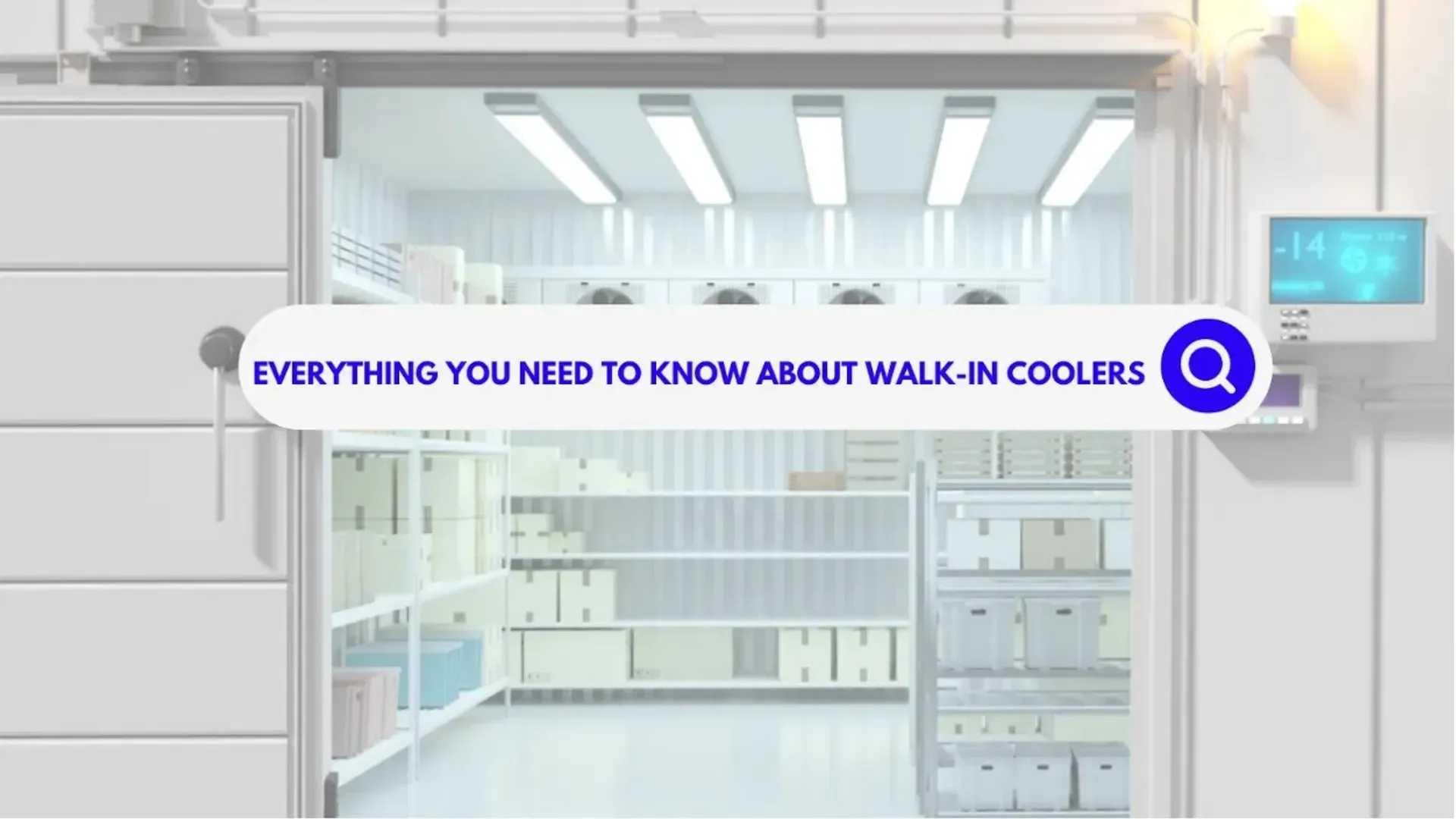Unlocking Coolness: Everything You Need to Know About Walk-In Coolers
FEATURED IN

In various industries, walk-in coolers are essential tools for maintaining the freshness and durability of perishable items. Businesses ranging from restaurants and pharmacies to flower shops and culinary companies depend on walk-in coolers to maintain the quality and safety requirements for their products.
Walk-in coolers are a vital part of operations in various sectors because of their dependability and versatility, whether they are used to store fresh food, medications, or floral arrangements.
Types of Walk-In Coolers
There are several varieties of walk-in coolers, and each is made to fulfill particular demands and specifications:
Modular walk-in coolers: Adaptable and bespoke units made of panels that are prefabricated
Panel Walk-In Coolers: For simple assembly and versatility in size and arrangement, use insulated panels
Refrigerated Warehouses: Large-scale storage spaces with bulk chilling capabilities are called refrigerated warehouses
Sizing and Capacity
A walk-in cooler's suitable size and capacity are determined by taking into account variables including inventory volume, available space, and operational needs. Accurately estimating storage capacity guarantees effective space usage while avoiding overflowing or underutilization.
Installation Process
Several important factors need to be taken into account before starting the installation procedure, including:
Choosing a location that will guarantee accessibility and legal compliance
Acquiring the required permissions and following the building codes in the area
A detailed procedure is followed during the installation process, which includes component assembly, unit testing, and commissioning. Structural limitations and electrical issues are frequent installation problems that can be resolved with the right preparation and knowledge
Maintenance and Upkeep
To guarantee a walk-in cooler lifetime and best performance, regular maintenance is necessary. Among them are:
Airflow constraints can be avoided by cleaning the evaporator fins and condenser coils
To keep the temperature constant, inspect the door seals for damage
Searching for indications of mechanical problems or refrigerant leakage during routine checks
Energy Efficiency and Sustainability
Putting energy-efficient procedures into place lessens the impact on the environment while also cutting operational costs. Among the tactics to improve energy efficiency are:
Switching to refrigeration and lighting technologies that use less energy
Using less potentially warming global refrigerants that are environmentally friendly
Reducing heat transfer by making air sealing and insulation improvement investments
Choosing the Right Walk-In Cooler for Your Business
The process of choosing the best walk-in cooler for a business requires determining its unique demands and weighing a number of variables, including:
Required temperature range and storage capacity
Space limitations and layout issues
Financial limitations and long-term operational needs
Prospective Developments in Walk-In Cooling Systems
The future of walk-in coolers is still being shaped by developments in refrigeration technology, with new trends such as:
Internet of Things (IoT) integration for predictive maintenance and remote monitoring
Adoption of intelligent systems to improve energy efficiency and temperature control
Creation of environmentally friendly refrigeration systems to achieve sustainability objectives
For companies looking to preserve the quality, freshness, and safety of their products, walk-in coolers are indispensable. Businesses may maximize their refrigeration solutions by making educated judgments and knowing the different types, installation procedures, and maintenance needs. Visit https://diversifiedpro.co/ to access all-inclusive walk-in cooler solutions customized to your unique requirements and start enjoying the coolness your company deserves.
 " class="object-cover object-center">
" class="object-cover object-center">  " class="object-cover object-center">
" class="object-cover object-center">